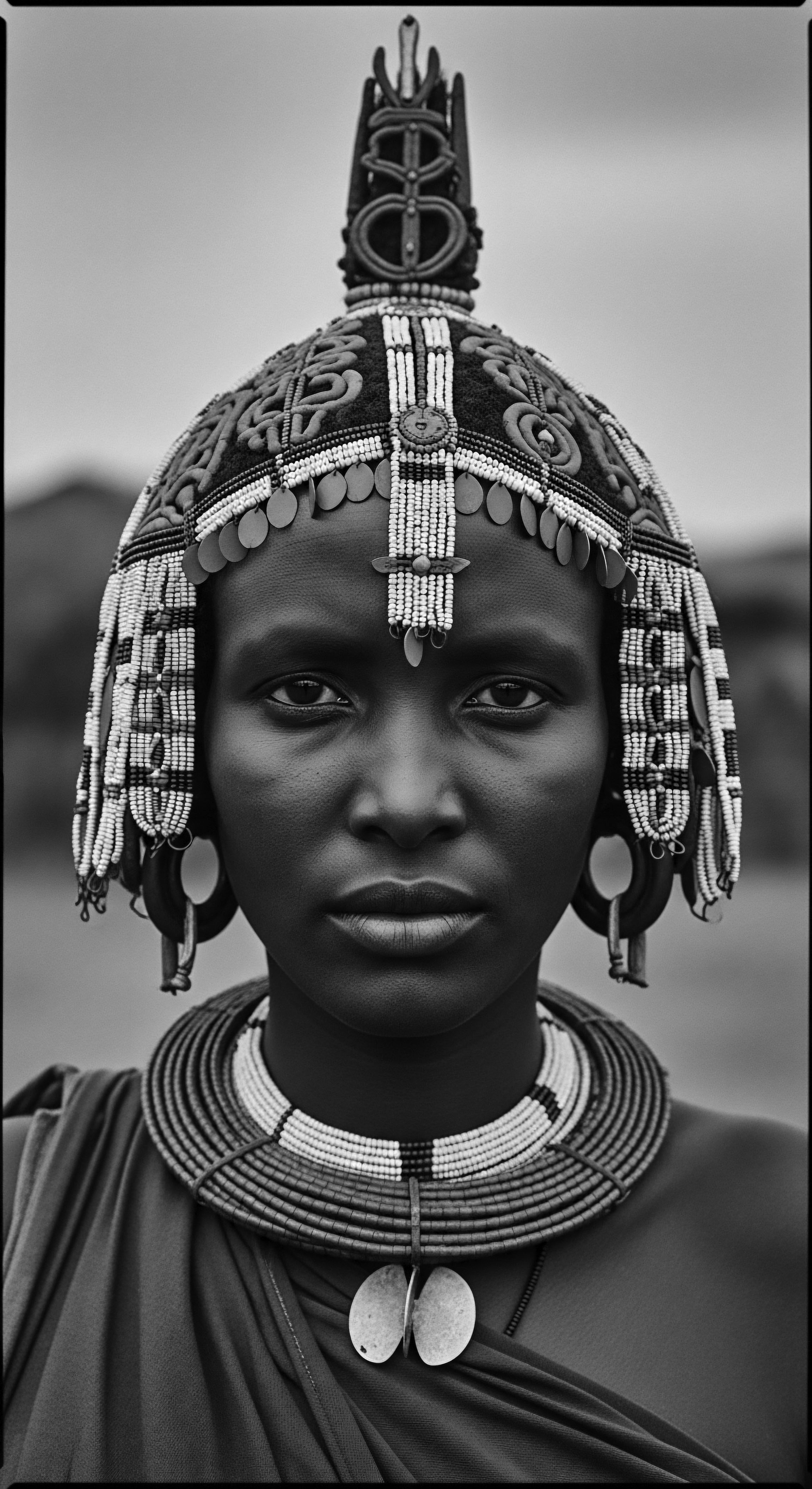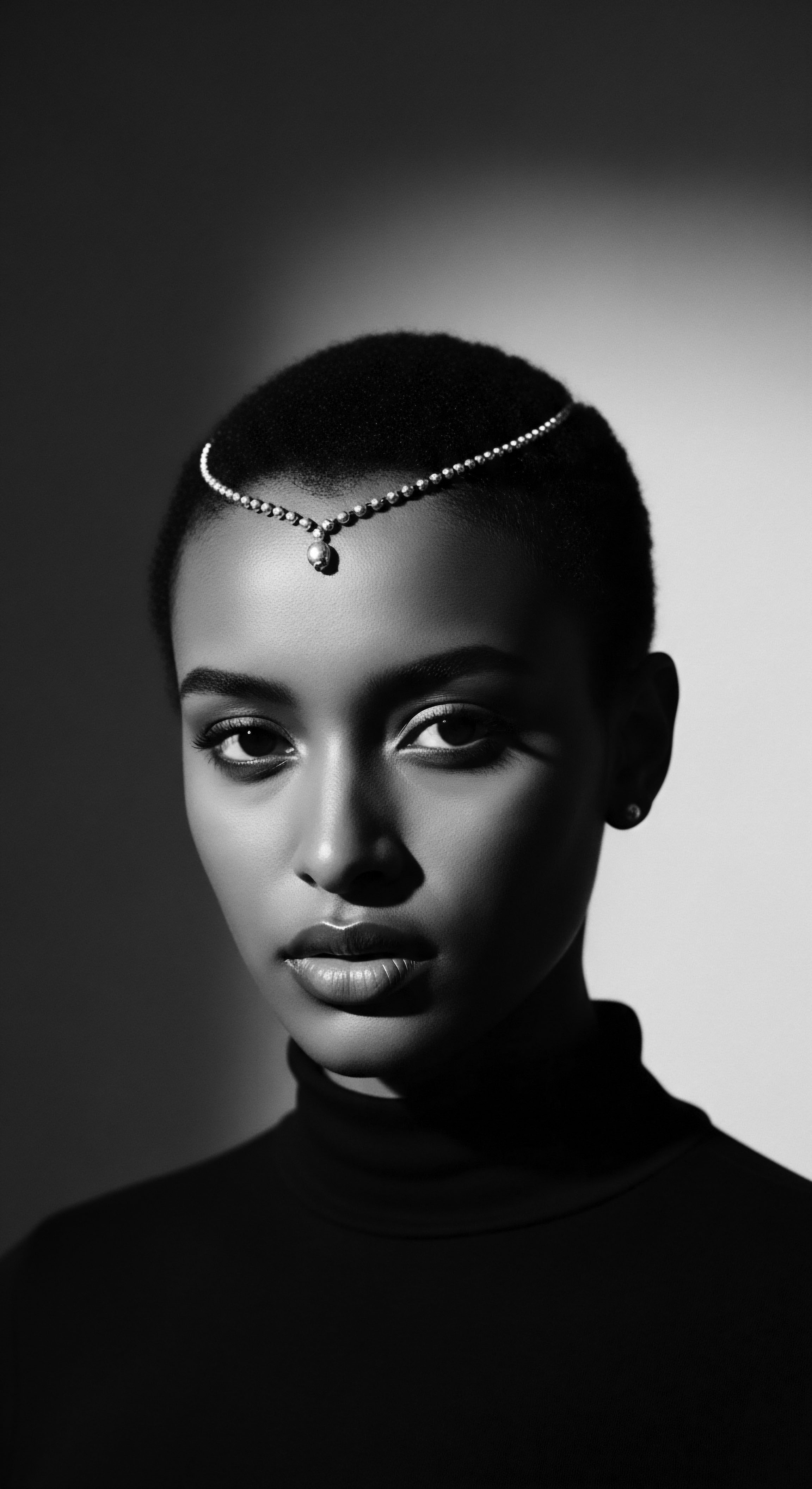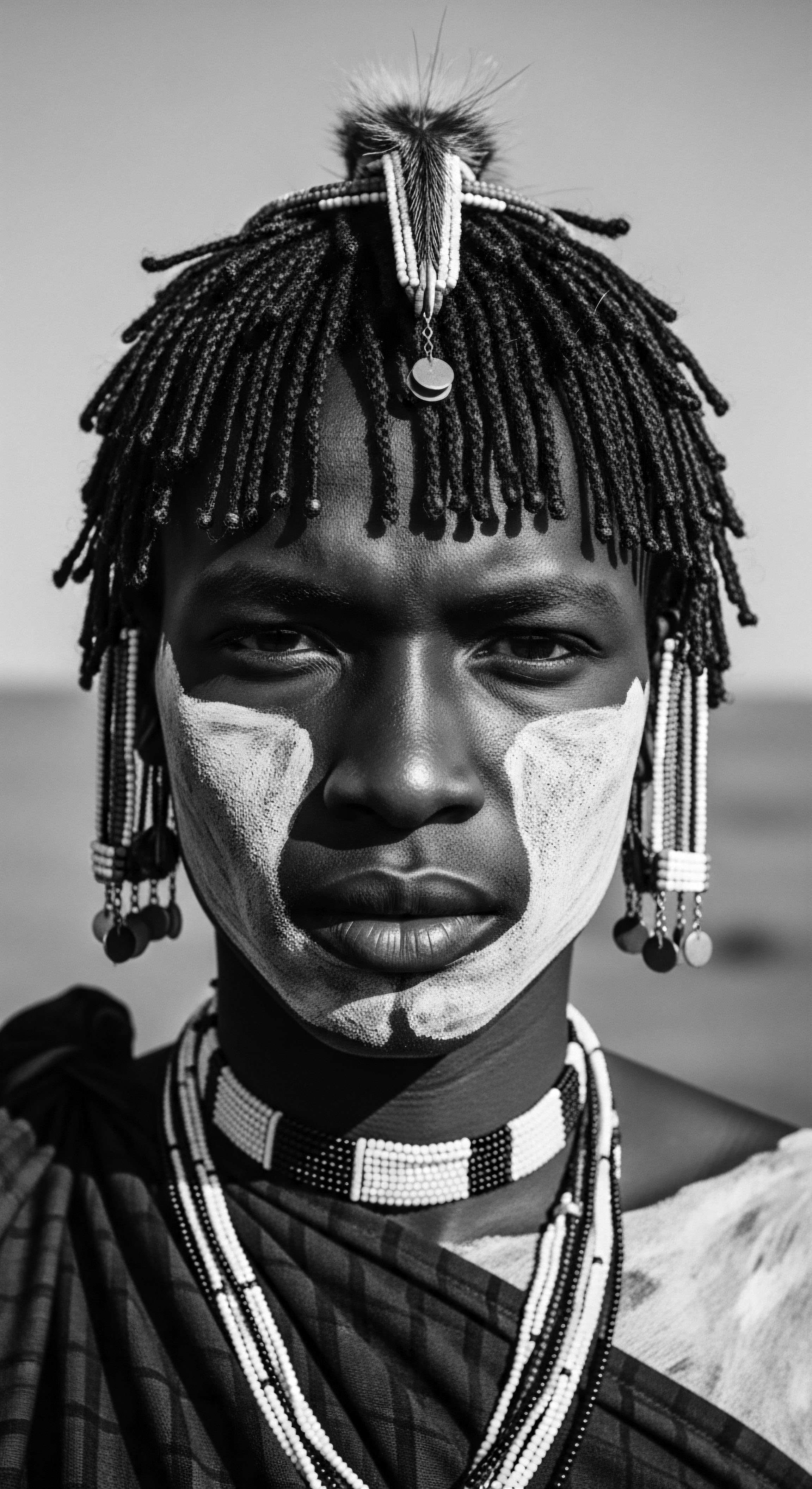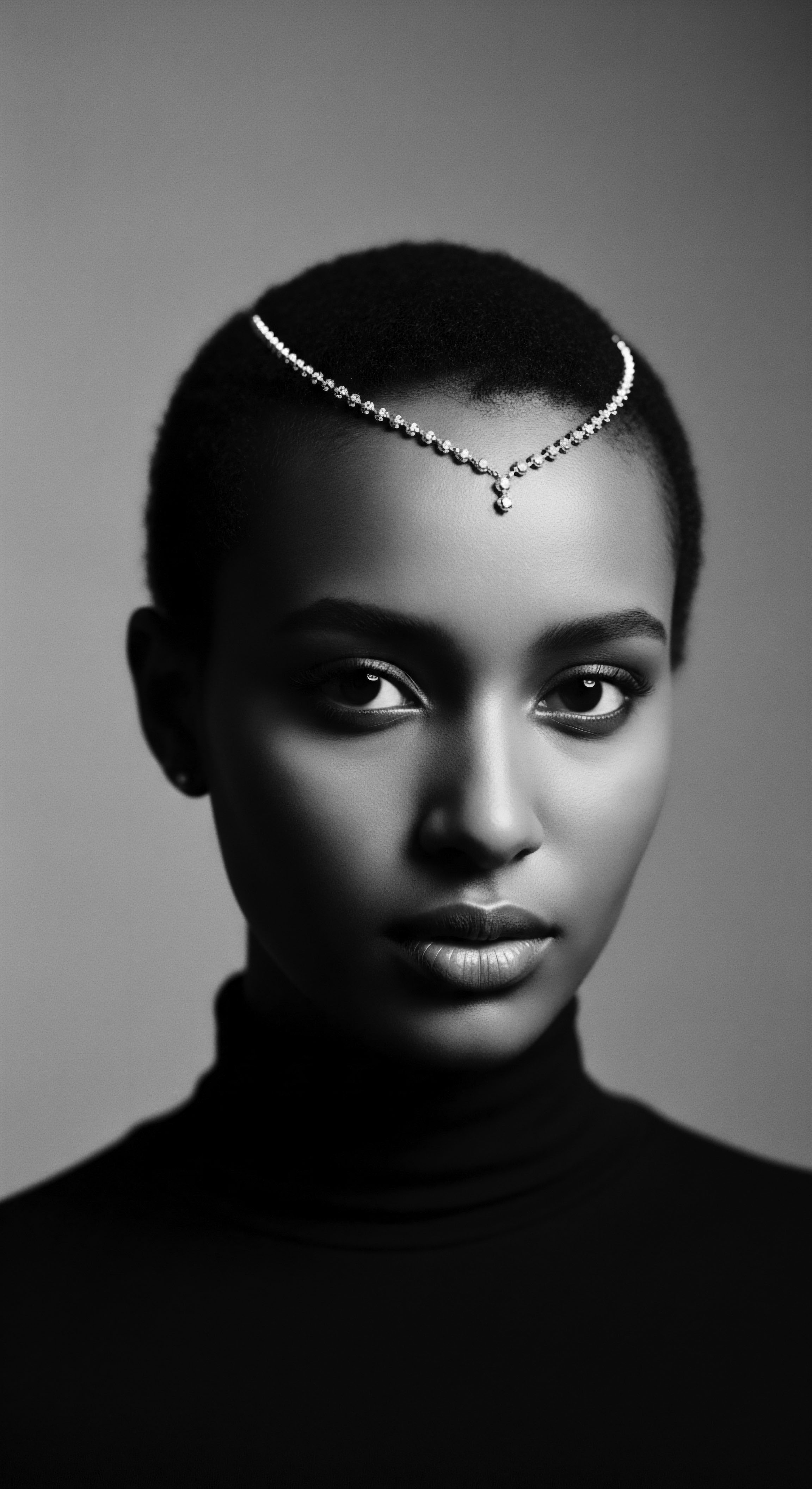
Roots
To truly understand the vibrant living culture of textured hair today, we must first journey backward, tracing the invisible threads that connect our contemporary rituals to the profound ancestral practices of African civilizations. It is a quest not just for knowledge, but for recognition of a legacy that flows through every curl, every coil, every strand. Our hair, far from being merely an aesthetic adornment, serves as a deeply resonant archive, holding stories of identity, resilience, and belonging that span millennia.
This heritage is not a static relic of the past; rather, it is a dynamic force, a pulsating rhythm that informs how we nurture, adorn, and express ourselves through our crowns in the present moment. We discover how the seemingly simple acts of today carry the weight of ancient wisdom, whispering tales of ingenuity and connection across time.

Ancestral Hair Anatomy and Its Wisdom
The very structure of textured hair itself bears the imprint of its African origins. Evolutionary biologists propose that the tight spirals and coils of Afro-textured hair developed as a protective shield against the intense ultraviolet radiation of the African sun, simultaneously providing insulation for the scalp and allowing for air circulation. This biological adaptation points to an inherent strength and functionality that underpinned the earliest understandings of hair health.
Ancient African societies recognized this intrinsic resilience and built their care practices around supporting, rather than altering, this natural design. They understood that dense, clean hair was a valued asset, a mark of social standing and well-being.
Consider the way hair was seen as the most elevated part of the body among the Yoruba people, a conduit for spiritual energy and a direct link to the divine. This perspective shaped every aspect of hair care, transforming it into a sacred ritual, not just a grooming task. The Yoruba, for example, believed the inner head (or ori-inu) to be the spiritual entity, the center of personal power and life force.
Hairstyles, therefore, were meticulously crafted to honor this sacred space, often designed to send messages to the gods. This deep spiritual reverence for hair meant that its anatomy was appreciated not only for its physical attributes but for its symbolic capabilities within a cosmic framework.
The intrinsic coiled structure of textured hair is an ancient biological adaptation, a testament to ancestral resilience under the African sun.

What Are the Ancient Roots of Hair Classification and Identity?
In pre-colonial Africa, hairstyles served as an intricate language, communicating a person’s identity, social standing, age, marital status, and even tribal affiliation. There was a distinct style for nearly every life event or social role, from royalty to a soldier preparing for battle, or a woman awaiting the return of her partner. This sophisticated system of communication predates any modern classification, offering a truly organic way to read a person’s journey and community ties through their crown.
Archaeological evidence from regions such as Kush and Kemet (present-day Sudan and Egypt) reveals elaborate hair adornments and styling dating back millennia, confirming hair’s profound cultural role. For instance, the Himba people of Namibia traditionally use a paste called otjize—a mixture of butterfat and red ochre—to coat their hair, signifying their connection to the earth and their ancestors. This practice highlights how aesthetics were inseparable from cultural narratives and spiritual beliefs.
| Traditional Element Braiding Patterns |
| Associated Meaning in Heritage Context Tribal affiliation, social rank, marital status, age group. |
| Traditional Element Hair Adornments |
| Associated Meaning in Heritage Context Wealth, spiritual protection, life events, fertility. |
| Traditional Element Hair Length/Condition |
| Associated Meaning in Heritage Context Health, social standing, period of mourning or celebration. |
| Traditional Element Use of Ochre/Clay |
| Associated Meaning in Heritage Context Connection to land, ancestors, specific tribal identity. |
| Traditional Element These elements formed a visual language, deeply rooted in the collective heritage of communities. |

The Language of Textured Hair From a Heritage Viewpoint
The lexicon we use today for textured hair, while increasingly comprehensive, still stands on the shoulders of ancient descriptive terms and practices. Consider the enduring recognition of diverse hair types across the African continent long before contemporary numerical or letter-based classification systems existed. Women in ancient African civilizations knew their hair, its tendencies, and what it needed. They developed techniques to manage and style it with remarkable precision.
- Cornrows ❉ This style, known to date back as far as 3000 B.C. in regions like the Horn and West coasts of Africa, served not only as a protective style but also as a means of communication and a signifier of social status.
- Bantu Knots ❉ Tracing their origins to the Bantu-speaking communities of Southern West Africa as early as the 2nd millennium BCE, these coiled knots served as a protective style and a way to define curls. They were, and remain, a testament to the ingenuity of ancestral styling.
- Dreadlocks ❉ With a long history in Africa, dating back to 500 BCE among Ethiopian Coptic Orthodox Church priests, locs were seen as a connection to the divine in some communities.

Ancestral Hair Cycles and Environmental Factors
Hair growth cycles were implicitly understood within ancient African communities through observation and generations of accumulated wisdom. While modern science details the anagen, catagen, and telogen phases, traditional societies recognized periods of hair vitality, dormancy, and shedding through lived experience. Their practices, like regular oiling and protective styling, aligned with supporting continuous, healthy growth.
Environmental factors, such as the hot, dry climates, heavily influenced the need for hair protection and moisture retention. This led to the widespread use of natural oils, butters, and clays that are still central to modern textured hair care. Shea butter, African black soap, palm kernel oil, and coconut oil are all indigenous ingredients with documented historical use for hair health and moisture. These substances provided a natural shield against the elements, preventing dryness and breakage, and fostering environments conducive to hair thriving.

Ritual
The contemporary rituals of textured hair care carry the enduring spirit of ancestral practices. What we perform with our hands today—the sectioning, the twisting, the careful application of rich, natural concoctions—echoes the ancient art of hair styling and the communal spaces where these traditions were once, and still are, passed down. This continuity stands as a powerful testament to the resilience of cultural heritage, transcending generations and geographies to find renewed expression in the modern world.

Protective Styles Inherited From Antiquity
The concept of protective styling is not a fleeting trend; it is a profound inheritance. Many styles celebrated today, from box braids to cornrows and twists, find their roots deep within African civilizations, dating back thousands of years. These were not merely decorative arrangements; they served a fundamental purpose ❉ to shield the hair from environmental damage, reduce manipulation, and retain precious moisture, thereby promoting length retention and overall hair health.
Consider the ingenuity of enslaved African women who, during the Transatlantic slave trade, braided rice seeds into their hair as a means of survival, a hidden act of cultural preservation. Cornrows, beyond their aesthetic appeal, were used as a covert communication medium, forming maps to freedom. This historical use underscores the profound functional and symbolic depth embedded within these styles, transforming them into instruments of resistance and ingenuity. The enduring practice of these styles today connects us to this incredible heritage of resilience.
Protective styles like braids and cornrows are not merely fashionable choices; they are living legacies of ancient African ingenuity and resilience.

How Does Natural Styling Honor Ancestral Practices?
The embrace of natural textures and definition techniques today is a direct honoring of ancestral practices that celebrated the hair in its most authentic state. Before the imposition of Eurocentric beauty standards, coiled and curly hair was admired and meticulously cared for. The meticulous process of washing, combing, oiling, braiding, or twisting, often taking hours or even days, was a social occasion, a moment for bonding within families and communities.
The communal act of hair styling, often performed by mothers, sisters, and aunts, served as a means of sharing stories, wisdom, and cultural knowledge, reinforcing social bonds. This collective approach to hair care stands in stark contrast to the often individualistic modern beauty routine. Even today, the enduring practice of gathering to style hair, whether formally or informally, carries the echo of these ancient communal traditions, solidifying connections and perpetuating heritage.
| Ancient Tool/Method Wooden/Bone Combs |
| Function and Cultural Context Detangling, sectioning, signifying status (often buried with owners). |
| Modern Parallel in Textured Hair Care Wide-tooth combs, detangling brushes. |
| Ancient Tool/Method Natural Plant Fibers |
| Function and Cultural Context Used as extensions, for braiding and adding volume. |
| Modern Parallel in Textured Hair Care Synthetic or human hair extensions for braids and weaves. |
| Ancient Tool/Method Clay, Ochre, Natural Dyes |
| Function and Cultural Context Coloring, protection, spiritual symbolism, tribal identity. |
| Modern Parallel in Textured Hair Care Hair dyes, color-depositing treatments, clay masks for scalp health. |
| Ancient Tool/Method Fingers, Hands |
| Function and Cultural Context Primary tools for intricate braiding, twisting, sectioning. |
| Modern Parallel in Textured Hair Care Still fundamental for many natural styling techniques. |
| Ancient Tool/Method The evolution of tools reflects a continuous effort to care for and adorn hair, honoring ancient principles. |

Wigs and Hair Extensions ❉ A Heritage Reclaimed?
The use of wigs and hair extensions, often viewed through a contemporary lens of fashion, also possesses deep historical roots in Africa. Ancient Egyptians, for instance, wore elaborate wigs made from human hair, wool, or plant fibers, often adorned with gold and beads, signifying wealth, social status, and religious devotion. These were not merely stylistic choices but complex statements of identity and connection to divinity. In fact, some of the earliest wigs date back to 2700 BCE in Egypt, where they served practical purposes like sun protection.
The adaptation and re-contextualization of these practices in modern times, particularly within Black and mixed-race communities, can be seen as a reclamation of this heritage. While motivations may have shifted—from survival and assimilation during periods of oppression to modern self-expression and versatility—the underlying tradition of augmenting one’s crown persists. This continuity demonstrates a powerful cultural memory, where historical practices find new meaning and purpose in the present.
- Ancient Egyptian Wigs ❉ Elaborate, often braided, and adorned with precious materials, serving as markers of status and religious affiliation.
- West African Hair Augmentation ❉ Use of natural fibers or even goat hair to add volume and length to styles.
- Modern Extensions/Wigs ❉ Versatile tools for protective styling, length, and style experimentation, reflecting a continuum of adornment and self-expression.

Heat and Hair ❉ A Historical Look
While modern heat styling tools present concerns about potential damage, the concept of altering hair texture through heat has an intriguing historical echo. Post-emancipation, in the wake of systemic pressures to conform to Eurocentric beauty standards, tools like hot combs became prevalent. Madam C.J.
Walker, a pioneering Black entrepreneur, developed and popularized products and methods, including heated combs, to assist Black women in achieving straightened hair. This was often a survival tactic, a means to navigate societal prejudices and gain acceptance in workplaces and schools where natural hair was deemed “unprofessional.”
It is important to remember that these were responses to oppressive beauty norms. Understanding this historical context provides a critical lens through which to view modern heat styling. It reminds us that while the tools and intentions may differ, the desire to manipulate hair for social acceptance or personal preference has complex historical underpinnings. The conversation today prioritizes safety and informed choice, a significant evolution from a past where choices were often dictated by external pressures.

Relay
The very essence of modern hair care for textured strands, particularly within Black and mixed-race experiences, exists as a direct relay of ancestral wisdom. It is a continuous current, carrying the power of ancient African traditions into contemporary regimens, transcending mere aesthetics to address holistic wellness and identity. This ongoing transmission of knowledge shapes how we approach daily routines, nightly protections, and the very ingredients we seek out for our crowns.

Building Regimens From Ancestral Blueprints
Modern personalized hair regimens, with their emphasis on hydration, nourishment, and protective styling, often mirror the foundational principles established in ancient African hair care. Our ancestors understood the importance of consistency and intentionality in maintaining healthy hair. They developed systems of care that involved regular cleansing, oiling, and intricate styling.
A study exploring the traditional herbal cosmetic knowledge of the Gbaya ethnic group in Eastern Cameroon documented the use of 36 different plant species for hair and skin care, with 78 distinct cosmetic recipes recorded. This research highlights the deep traditional knowledge regarding plant-based ingredients for beauty and wellness. (Sharaibi et al. 2024, p.
1-7). Such findings underscore that personalized regimens are not a new invention but a continuation of deeply rooted traditional practices, adapted to modern contexts. The careful selection of natural elements, tailored to individual needs, finds a direct lineage in these ancestral approaches.
Contemporary hair care regimens, focusing on natural ingredients and gentle practices, echo ancient African wisdom regarding holistic hair wellness.

The Nighttime Sanctuary and Bonnet Wisdom
The ritual of protecting hair at night, often involving silk or satin bonnets and scarves, is a direct descendant of ancient African practices. Headwraps, known by names like ‘Dukus’ in Ghana or ‘Geles’ in Nigeria, have a rich cultural history originating in Sub-Saharan Africa as early as the 1700s. These coverings served multiple purposes ❉ indicating age, marital status, and prosperity, but also crucially, protecting elaborate hairstyles and preserving moisture.
The very act of covering the hair before sleep, preventing friction and moisture loss, is a practical application of wisdom passed down through generations. Cotton pillowcases, which can absorb natural oils from the hair, were not the norm in ancient African households; alternatives would have been employed, or the hair simply protected by careful wrapping. This enduring practice of the “nighttime sanctuary” reflects a profound understanding of hair health and longevity, a heritage that continues to safeguard textured strands globally.

Ingredient Deep Dives for Textured Hair Needs
The current surge in demand for natural, ethically sourced ingredients in hair care is a direct return to the wellspring of ancient African knowledge. Ingredients like shea butter, African black soap, marula oil, and chebe powder are not new discoveries; they are ancestral staples with centuries of documented use.
- Shea Butter ❉ Extracted from the nuts of the shea tree, this butter has been cherished for its moisturizing and healing properties, rich in vitamins A and E and essential fatty acids. Its deep nourishing capabilities were understood and applied for hair health long before modern cosmetic science.
- African Black Soap ❉ Traditionally crafted from plantain skins, cocoa pods, and palm oil, this cleanser is known for purifying the hair and scalp without stripping natural oils. This gentle yet effective cleansing method predates harsh chemical shampoos, highlighting an ancient wisdom of balance.
- Marula Oil ❉ A traditional oil from Mozambique and South Africa, valued for its moisturizing and antioxidant properties, protecting hair from environmental stressors.
- Chebe Powder ❉ Hailing from Chad, this powder, made from crushed leaves and nuts, is celebrated for strengthening hair, preventing breakage, and retaining moisture. Its use demonstrates an ancient understanding of hair’s structural needs.
These traditional ingredients offer a powerful alternative to synthetic compounds, aligning modern practices with ancestral wisdom regarding topical nutrition for hair. The scientific community is increasingly recognizing the efficacy of these botanicals, validating what traditional healers and communities have known for centuries. This symbiotic relationship between ancestral practice and scientific inquiry fortifies the value of heritage in contemporary hair care.

Textured Hair Problem Solving Through the Generations
Many common textured hair challenges today—dryness, breakage, scalp issues—were addressed by ancient African communities through their traditional practices. Without access to modern laboratories, they developed solutions rooted in their environment and communal knowledge. The consistent application of natural oils and butters combated dryness.
Protective styling minimized mechanical stress and breakage. Herbal remedies and clays were used to soothe irritated scalps and address concerns like dandruff.
For instance, the use of Ziziphus spina-christi leaves in Ethiopia for hair wash and its anti-dandruff properties is an example of localized plant knowledge addressing specific hair and scalp concerns. (Ethnobotany Research and Applications, 2025). This deep experiential knowledge, passed through generations, forms the initial framework for understanding and addressing hair concerns for textured hair. Modern solutions often build upon, or even rediscover, these ancestral strategies, offering both traditional and scientifically informed paths to hair wellness.

Holistic Influences on Hair Wellness
Ancient African wellness philosophies viewed hair as an integral part of the whole self, deeply interconnected with spiritual, social, and physical well-being. This holistic perspective resonates strongly with modern wellness advocates who promote the idea that hair health extends beyond topical products to encompass diet, stress management, and mental well-being.
The ritualistic aspects of hair care—the communal braiding, the time dedicated to styling, the spiritual reverence for the head—were inherently holistic. They fostered community bonds, provided moments of mindfulness, and reinforced cultural identity, all contributing to a sense of well-being. Modern hair care, when approached with intentionality and self-care, taps into this ancestral understanding. It becomes a moment for connection—to self, to community, and to the rich tapestry of heritage that continuously guides and enriches our textured hair journeys.

Reflection
The journey through the echoes of ancient African hair traditions reveals a truth both profound and beautifully simple ❉ our modern hair care rituals are not isolated acts but living extensions of a timeless heritage. Each conscious touch, every nourishing application, every protective style, carries the whispers of ancestors who understood the power held within each strand. This is the enduring ‘Soul of a Strand’—a recognition that textured hair is a vibrant testament to survival, creativity, and identity. From the very biology that shaped its protective coils to the communal acts of care that strengthened familial bonds, the legacy is undeniable.
We are not just caring for hair; we are engaging in a dialogue with history, upholding a sacred tradition, and contributing to a future where every textured crown is seen for its inherent beauty and the magnificent stories it tells. This living archive, passed down through generations, reminds us that the quest for hair wellness is a return to roots, a celebration of resilience, and an unwavering affirmation of heritage.

References
- Omotoso, Sharon Adetutu. “Gender and Hair Politics ❉ An African Philosophical Analysis.” Journal of Pan African Studies, vol. 24, no. 6, June 1936, p. 87.
- Sherrow, Victoria. Encyclopedia of Hair ❉ A Cultural History. Greenwood Press, 2006.
- Allen, Maya. History of Braids. Brydie.com.
- Sharaibi, O.J. Oluwa, O.K. Omolokun, K.T. Ogbe, A.A. & Adebayo, O.A. “Cosmetic Ethnobotany Used by Tribal Women in Epe Communities of Lagos State, Nigeria.” J Complement Med Alt Healthcare, vol. 12, no. 4, 2024, pp. 1-7.
- Caffrey, Cait. “Afro-textured hair.” EBSCO Research Starters, 2023.
- Tharps, Lori. Hair Story ❉ Untangling the Roots of Black Hair in America. St. Martin’s Griffin, 2002.
- Obasi, Chinelo. “The History of Black Hair.” BLAM UK CIC, 2022.
- Okoro, Nnedi. “African Hairstyles ❉ Cultural Significance and Legacy.” Afriklens, 2024.
- Mensah, Adjoa. “The Power of Hair in African Folklore ❉ Rituals and Traditions.” Bebrų Kosmetika, 2024.
- Eze, Adaora. “Ancient African Hair Growth Secrets For Healthy Hair.” Sellox Blog, 2021.
